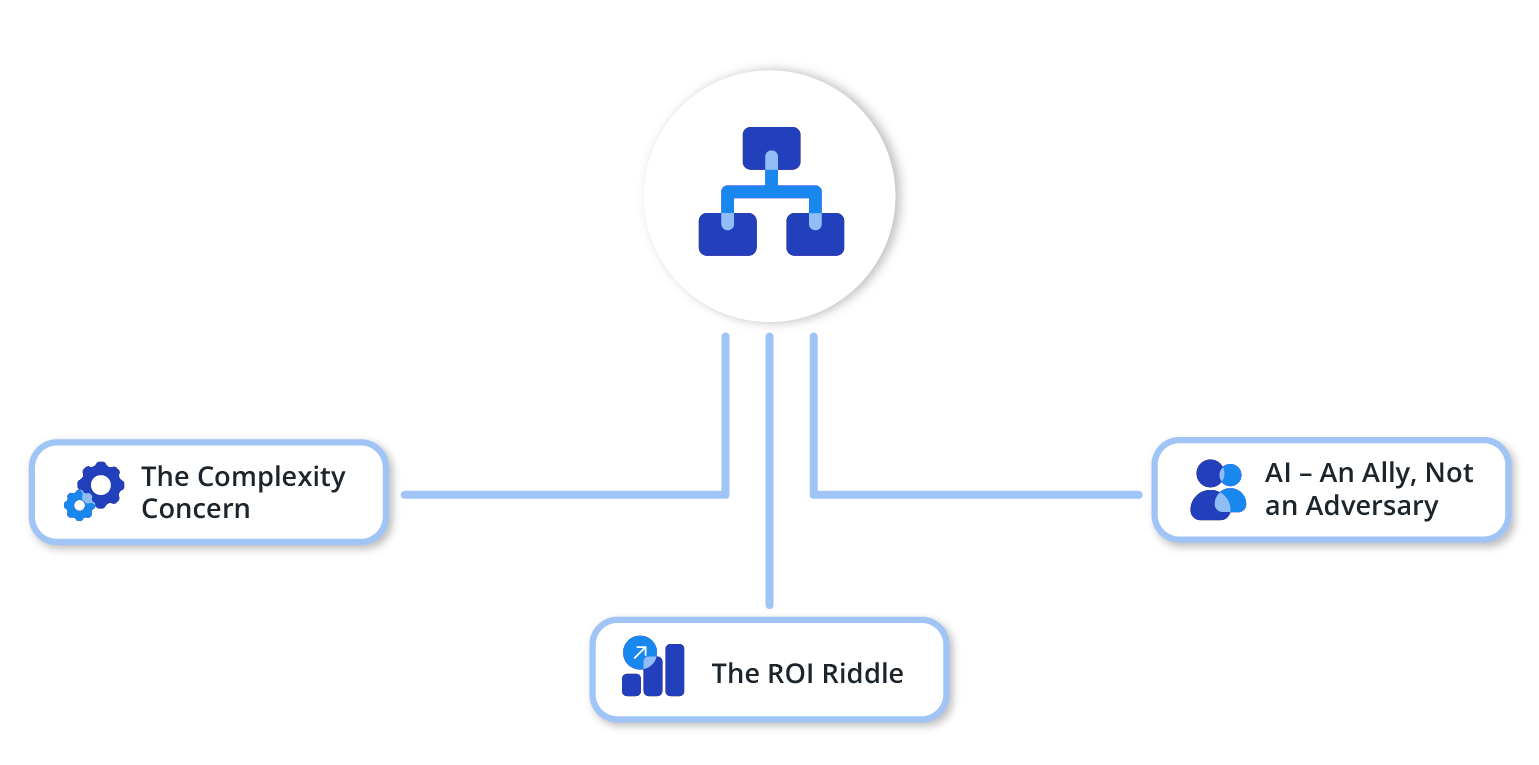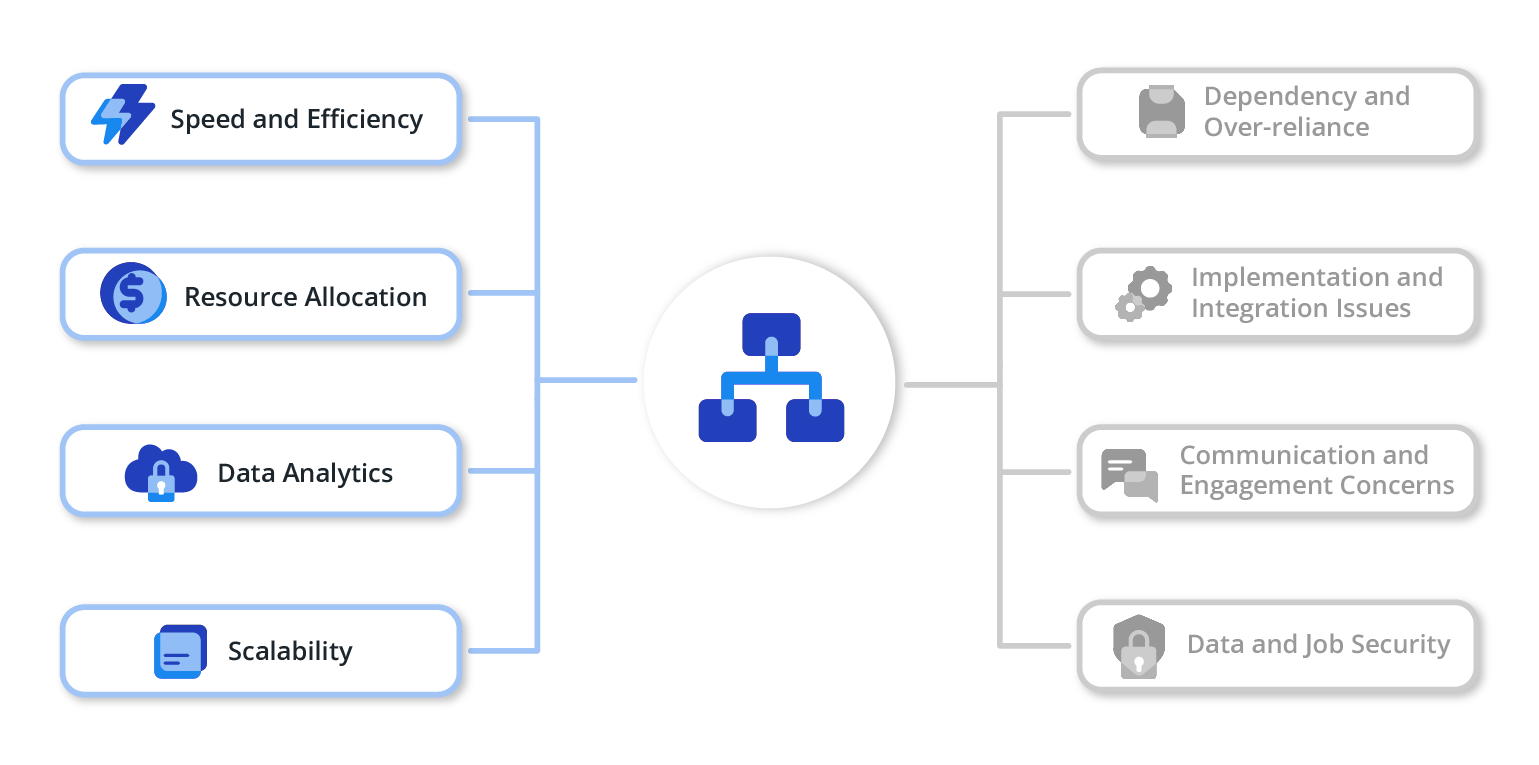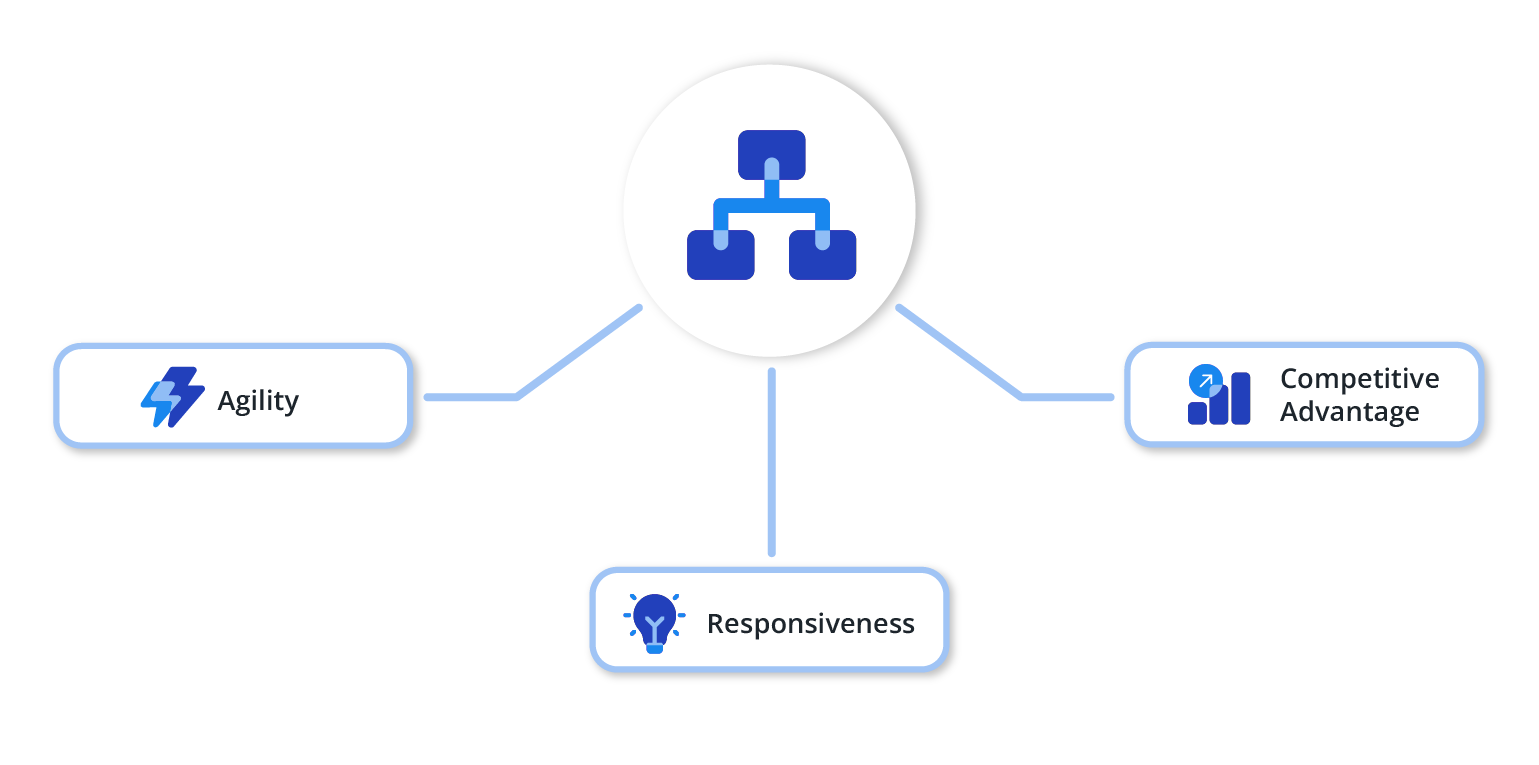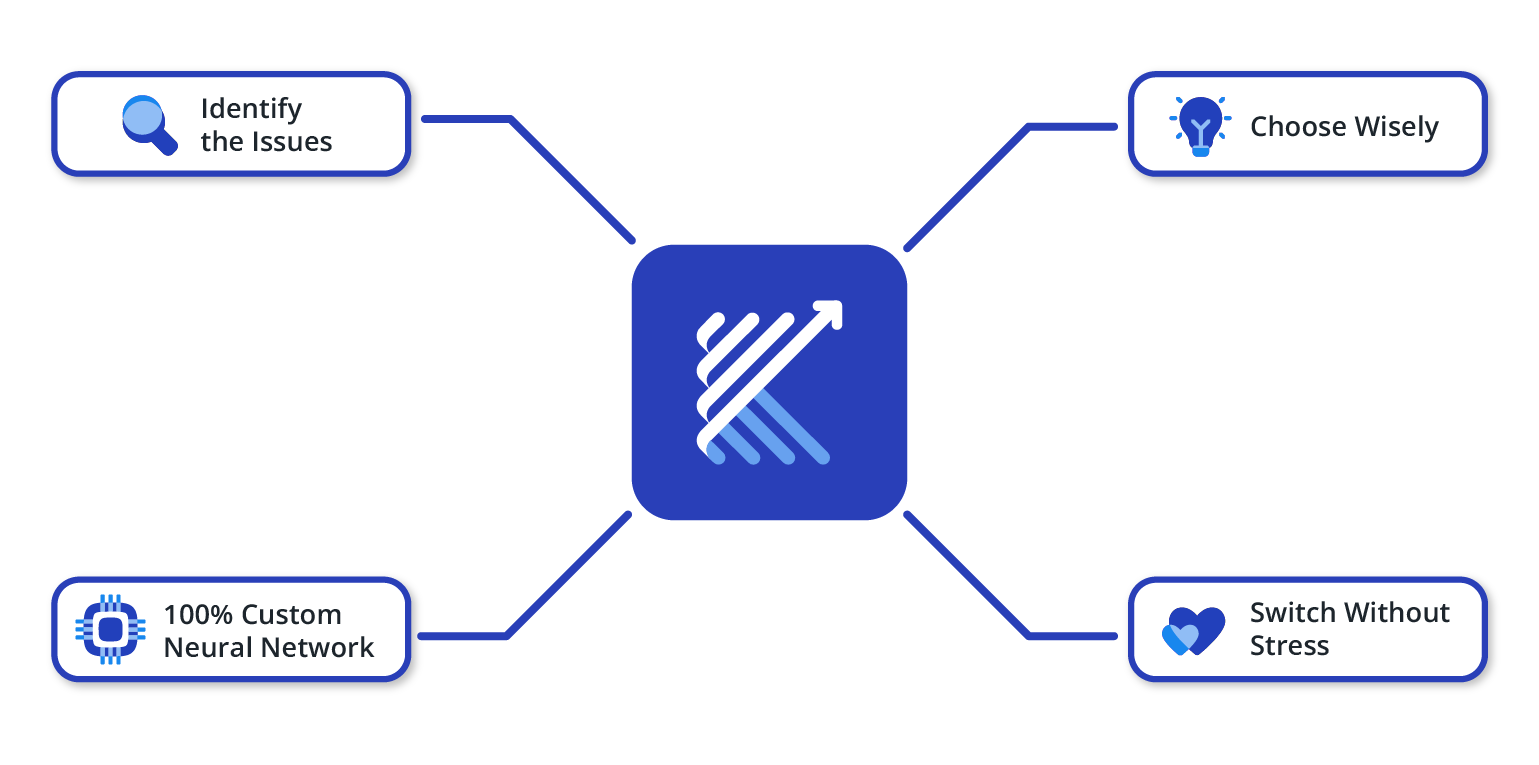The challenges facing enterprise leaders and project managers have never been more pronounced. The task at hand? Balancing expansive projects, ensuring pinpoint accuracy, and meeting tight deadlines. Traditional project management methodologies, while reliable, now struggle with the growing complexities of the digital age.
Project management automation (PMA) comes out as the strategic solution, promoting increased efficiency and precision. For those unsure about the ROI of such a transition or the integration of AI into project management, we get you. The key is understanding.
In this guide, we’ll shed light on the benefits of PMA, address common misconceptions, and emphasize its growing importance. We’ll also highlight how platforms like Kizen simplify the transition to automation.
Join us to discover the future of modern enterprise management.
What Is Project Management Automation?
Imagine being the maestro of an orchestra where every instrument is in sync, creating harmonious melodies without a hiccup. Project management automation does that for your enterprise, coordinating each department, team, and task toward a shared goal.
Project management automation uses technology to improve how projects are managed by eliminating tedious manual tasks and replacing them with streamlined, error-free processes.
But more than replacing human tasks with technology, it boosts human capabilities. Its objective is simple: more efficiency, less human intervention, and better outcomes.
The Competitive Landscape: Why Automation Is No Longer Optional
With the rapid technological advancements, globalization, and evolving consumer needs, businesses are always on their toes. Projects that took months now must be completed in weeks or days. With their inherent errors and delays, manual processes can’t keep up with these demands.
Customer expectations have also skyrocketed. They seek instant solutions, quick responses, and a seamless user experience from start to finish. Sticking to traditional methods in this environment is like attempting to stream the latest 4K video on a dial-up connection. Sure, it might work, but the experience is subpar and can lead to frustration.
Moreover, the global market has expanded, breaking physical boundaries. Collaboration among teams from different continents and time zones is the new norm. Relying solely on manual coordination in such scenarios isn’t just challenging; it’s nearly impossible.
Then there’s the data. Modern businesses produce vast amounts of data daily. Manually sifting through this data mountain to extract meaningful insights is not only tedious but also prone to errors.
Lastly, scalability is crucial. As businesses grow, the complexity of their projects increases manifold. Manually handling such scaled-up operations can lead to inefficiencies, miscommunications, and costly errors.
Thus, the digital age doesn’t offer the luxury of choice when it comes to automation in project management. It’s a must, driven by the demands of modern business dynamics.
Overcoming Doubts About Automation and AI in Project Management
If you’re new to this automation, diving headfirst into this tool may seem daunting. Let’s address some common hesitations:
The Complexity Concern
“It’s too complex for my team.”
This is a valid fear. Every new technology requires familiarization. However, modern automation tools are designed to be user-friendly. Plus, the time spent learning is dwarfed by the hours saved in the long run.
The ROI Riddle
“Will the investment truly pay off?”
The answer lies in the long game. With reduced errors, better efficiency, and fewer project delays, the ROI on project management automation tools becomes evident quickly.
AI – An Ally, Not an Adversary
Far from the fictional stories of machine domination, AI acts as a trusty sidekick in project management. It provides insights, spots inconsistencies, and makes predictive recommendations, but always under human guidance.
Advantages and Disadvantages of Project Management Automation
Automation is a double-edged sword that can drive businesses forward but can also present unforeseen complications.
Let’s explore its tangible benefits and potential pitfalls that must be navigated.
The Benefits and Real-World Impact of Project Management Automation
Leveraging project management automation is like unlocking a treasure chest of efficiencies. Here’s how businesses globally are reaping its rewards:
Speed and Efficiency
Speed—without compromising quality—is paramount in any business. Project management automation (PMA) acts as a turbocharger for project execution, ensuring that the accelerator is firmly pressed on timelines.
Let’s break it down: Traditional project management often sees bumps in the road—miscommunication, overlooked tasks, and bothersome manual errors. However, with PMA, a lot of these are eliminated.
Automated workflows ensure tasks proceed from one phase to the next without delay. Moreover, human error, especially in repetitive tasks, is drastically minimized. The result? Projects aren’t just faster—they’re polished, precise, and free of unnecessary hitches.
Resource Allocation
Resource misallocation is a silent project killer. Spreading resources too thin can stall projects, while overallocation can result in budget overruns.
Project management automation tools have advanced algorithms that evaluate the requirements of a project and then allocate resources accordingly. No more overburdened departments or idle hands.
Plus, with real-time tracking, reallocating resources based on changing dynamics becomes a breeze. The big win? It leads to better utilization of workforce and tools, ensuring burnout is reduced, morale is kept high, and projects continue to move smoothly.
Data Analytics
If projects are the engine of a company, data is the fuel. With project management automation, the sheer depth of analytics available is staggering. Every task, process, and project become a goldmine of data. These aren’t just numbers on a screen but actionable insights.
Project management automation tools can dissect this data to reveal patterns—what went well, where the bottlenecks were, or which processes can be optimized. Over time, these insights help fine-tune methodologies, forecast potential challenges, and strategically plan for future projects. Every completed project contributes to the success of future ventures.
Scalability
In a growth-oriented business environment, scalability is the standard of success. It’s not just about expanding but how efficiently you can do so. Project management automation is the secret weapon.
Imagine your business lands a project three times the size of what you’re used to. Without automation, this would mean three times the resources, time, and, potentially, complications. But with project management automation, businesses can scale up without an increase in resources or costs.
Automated workflows, standardized processes, and data-driven insights mean more significant projects are as streamlined and efficient as smaller ones. It’s like having the infrastructure of a start-up with the capability of an enterprise.
The Drawbacks of Project Management Automation
While it has many benefits, businesses should also be aware of the potential pitfalls of project management automation to navigate them effectively.
Dependency and Over-reliance
Automation is an excellent way to enhance efficiency, but there’s a line between use and overuse. If businesses lean too heavily on automation without understanding its complexities, they risk becoming overly dependent.
Remember, automation is meant to be an assistant, not a replacement. Striking the right balance ensures processes remain streamlined without compromising human insight.
Implementation and Integration Issues
The market is flooded with automation tools, each boasting unique features. The challenge? Ensuring the one you pick seamlessly integrates with your existing infrastructure. Without this compatibility, businesses might face disruptions or even data losses. It’s essential to thoroughly vet any tool to ensure it aligns with your systems and requirements.
Communication and Engagement Concerns
Automation has made many tasks hands-free, but it’s essential to remember the value of human touch. Automated alerts, reports, or status updates are convenient but shouldn’t replace human communication.
Teams still need face-to-face (or virtual) interactions, brainstorming sessions, and feedback loops. Automation can streamline communication but can’t replace the depth and nuance of human interaction.
Data and Job Security
Cybersecurity threats are ever-evolving, and any tool brought into an organization must prioritize security. Automated tools, given their online nature, can be potential targets. It’s essential to ensure that the chosen tool has robust security measures.
When it comes to employment, many fear that automation might replace jobs. But it’s not as straightforward as it seems. Automation tends to transform roles, pushing employees to develop and adapt. It’s about elevating roles and refining skills, not total displacement.
How “Automation in Project Management” Helps Businesses
Automation in project management offers businesses a powerful toolkit to navigate this dynamic environment. Here’s a closer look at how this transformative tool makes businesses agile, responsive, and ahead of competitors.
Agility
Today’s markets are unpredictable. Economic shifts, technological advancements, and sociopolitical events can all affect a business’s trajectory.
With automation, companies don’t just weather these changes; they harness them. Automated tools provide dynamic feedback, allowing teams to tweak strategies quickly. Instead of being at the mercy of market volatility, businesses equipped with automation can adapt, adjust, and seize emerging opportunities.
Responsiveness
Customer preferences can change overnight. Relying on outdated data or slow feedback loops can result in missed opportunities or, worse, disappointed clients. Automation offers real-time data access, enabling businesses to stay updated and anticipate changing client needs.
By regularly refining their strategies based on new insights, businesses can consistently meet customer expectations. It’s not just about problem-solving anymore; it’s about problem prevention.
Competitive Advantage
In the corporate race, coming in second isn’t good enough. To lead, businesses need an edge—and automation provides it.
Companies using automation tools and strategies are not bound by traditional limitations. They can handle more extensive projects, manage more complex tasks, and do so with higher accuracy and efficiency. By setting innovative benchmarks, they ensure competitors are always a step or two behind, playing catch-up.
Making the Shift: Transition Seamlessly with Kizen
Deploying project management automation initiatives can feel daunting. Kizen makes this shift straightforward and uncomplicated for our clients:
Identify the Issues
Begin by understanding the challenges in your existing systems. Whether they’re inefficiencies or errors, identifying these issues is essential to determine your organization’s next steps.
Choose Wisely
Every platform has its own advantages, but Kizen’s quick deployment sets it apart. You can expect significant improvements in weeks, not months. And no matter how complex or regulated your industry might be, Kizen can get you deployed in under half a year!
Achieve Ultimate Integration Through Your 100% Custom Neural Network
Seamless integration between technologies is paramount. Kizen’s 100% custom neural networks far surpass the benefits and ROI of traditional technology investments.
By deploying Kizen across all critical data and technology, the software can achieve an unprecedented level of synchronization and functionality. This hyper-connectivity boosts team automation and collaboration, ensuring every tech investment works harder, smoother, and smarter for your organization.
Switch Without Stress
Kizen simplifies the transition to automation. Its revolutionary modular infrastructure and user-friendly, no-code drag & drop tools ensure easy modifications accessible to all your VIP team members—not just developers.
Kizen replaces outdated systems, supports all technical skill levels, and has tools to manage modern data and technology needs. Its goal isn’t merely to introduce a new system but to elevate your organization’s performance across all teams.
The Imperative of Project Management Automation
The world is moving rapidly; clinging to manual processes could leave your business in the dust. The importance of transitioning to automation in project management can’t be stressed enough. It’s not just keeping up with the times but propelling your business into the future.
For decision-makers teetering on the edge, remember that every leap of innovation comes with fears. But, with tools like Kizen, the leap isn’t into the unknown but into a world of unlimited potential.
To further assist you in this transition, we offer a range of resources, webinars, and demos on Kizen’s automation tools. Dive in, explore, and take that leap into the future of project management.












